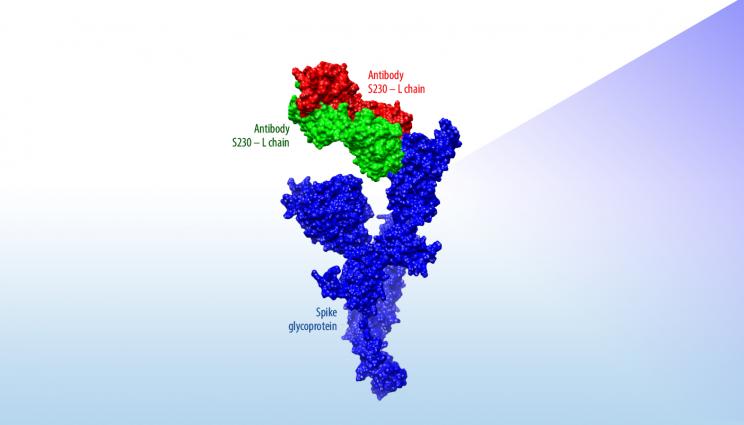
This figure shows how S230, an antibody known to have neutralizing activity against the Severe Acute Respiratory Syndrome coronavirus, is predicted to interact with an initial model of a surface protein on the novel coronavirus. This computational estimate can quickly provide researchers with structural insights without waiting for time-consuming X-ray crystallography images of the actual protein.
As global concern continues to rise about a novel coronavirus spreading from China, a team of Lawrence Livermore National Laboratory (LLNL) researchers has developed a preliminary set of predictive 3D protein structures of the virus to aid research efforts to combat the disease.
The team's predicted 3D models, developed over the past week using a previously peer-reviewed modeling process, are based on the genomic sequence of the novel coronavirus and the known structure of a protein found in the virus that causes Severe Acute Respiratory Syndrome (SARS), also a coronavirus that closely resembles the new virus.
"A major part of the value of these new structural models is that they present the predicted protein in complex with SARS-neutralizing antibodies," said Adam Zemla, an LLNL structural biologist and mathematician. "This can be thought of as the first step for the global research community to identify and model how therapeutic antibodies can be designed to fight the novel coronavirus."
Lab researchers are designing a diversity of protein models because the new coronavirus protein structure is not yet known, according to Daniel Faissol, a data scientist in the Lab's Computational Engineering Division.
The gold standard for obtaining protein structures for viruses is X-ray crystallography, but the entire process to learn the 3D structure of proteins can require weeks to months.
"We are making our initial protein structures available to the broader research community in the hopes of accelerating the development of disease countermeasures globally, because we hope to see a rapid response and because the situation is evolving so quickly. As we obtain more information about the virus, our intention is to update our models and provide follow-up data releases," Faissol said.
To date, the Lab researchers have developed seven 3D, predictive models of coronavirus proteins where therapeutics could be targeted using three different antibodies.






